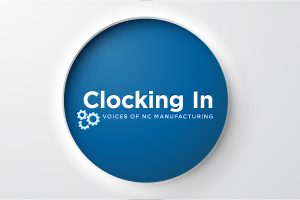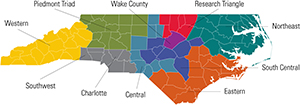If your car has ever revved up to a really high rpm while you’re parked or idling, you already know one fundamental truth about project management: hard work does not always equal quality work. In your workplace, like in your car, overly difficult work sometimes indicates that there’s a problem; something may not be functioning as efficiently as it should.
Many times employees become “accidental” project managers. Sometimes we take on projects to learn new skills and help further our careers. Other times, we’re handed projects that we don’t feel properly equipped to manage. With limited theoretical knowledge of practical project management, you might be tempted to hide in your cubicle googling questions like “How do you plan a large project?” or, “How do I know if my project has been successful?” At this point, you’re working like an engine that is idling high in park; you’re not doing efficient work.
If you are an “accidental” project manager here are three things you can do right now to increase efficiency, bring focus to your project and boost your return on investment (ROI):
- Develop a Schedule – When developing a schedule for a project, think beyond the start and end dates. It is critical to denote multiple milestones within the timeframe that can help you gauge the success of your project. The development of a schedule can also help you stay on track, so you don’t find yourself putting unnecessary stress on yourself or others when you come up against a deadline. Also, in most cases, team members want to know where they are going, how they are going to get there, and how they’ll know when they reach their destination.
- Create a Budget – It’s imperative to ensure that the project has the necessary resources in place. There is nothing more frustrating, heartbreaking and disappointing than halting a project because of insufficient funding. It’s like running out of gas when you’re just six miles from Disneyland.
- Manage Project Risks – Strive for the best and plan for the worst. What factors could possibly pose problems now or in the future? Compare risk management to a spare tire. When you are driving the project, it’s good to know that if you get a flat tire, you have the resources (because you developed a budget, for example) to quickly resolve the problem.
In closing: work smarter, not harder!
Curious to learn more about how project management can help your organization? Read more about NC State IES project management solutions.
—

Barbara Williams is the Director of Standards and Regulatory Services at NC State Industry Expansion Solutions. Barbara provides implementation, facilitation and training for management system implementation to businesses across North Carolina. With over 20 years of manufacturing and engineering experience, Barbara has a B.S. in mechanical engineering and has worked for the United States Department of Energy (DOE) as a nuclear safety engineer and as an ISO 9000 consultant serving companies in the metal fabrication, industrial painting, rubber products, medical/industrial gases, and textiles industries.



